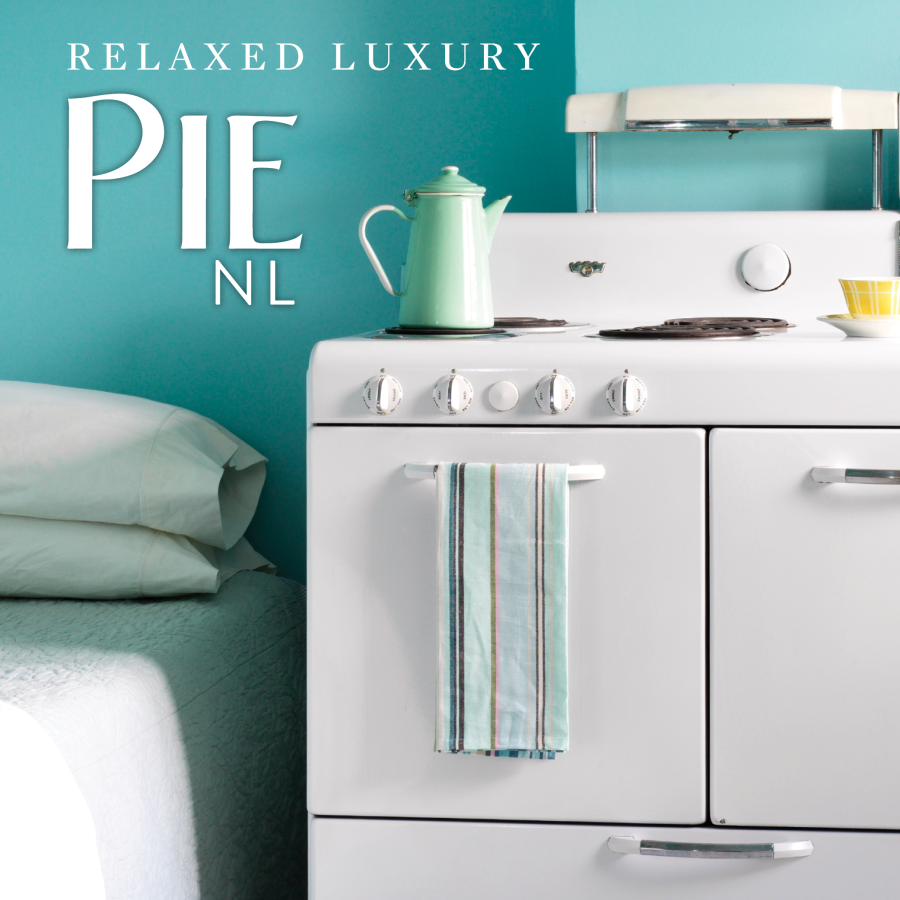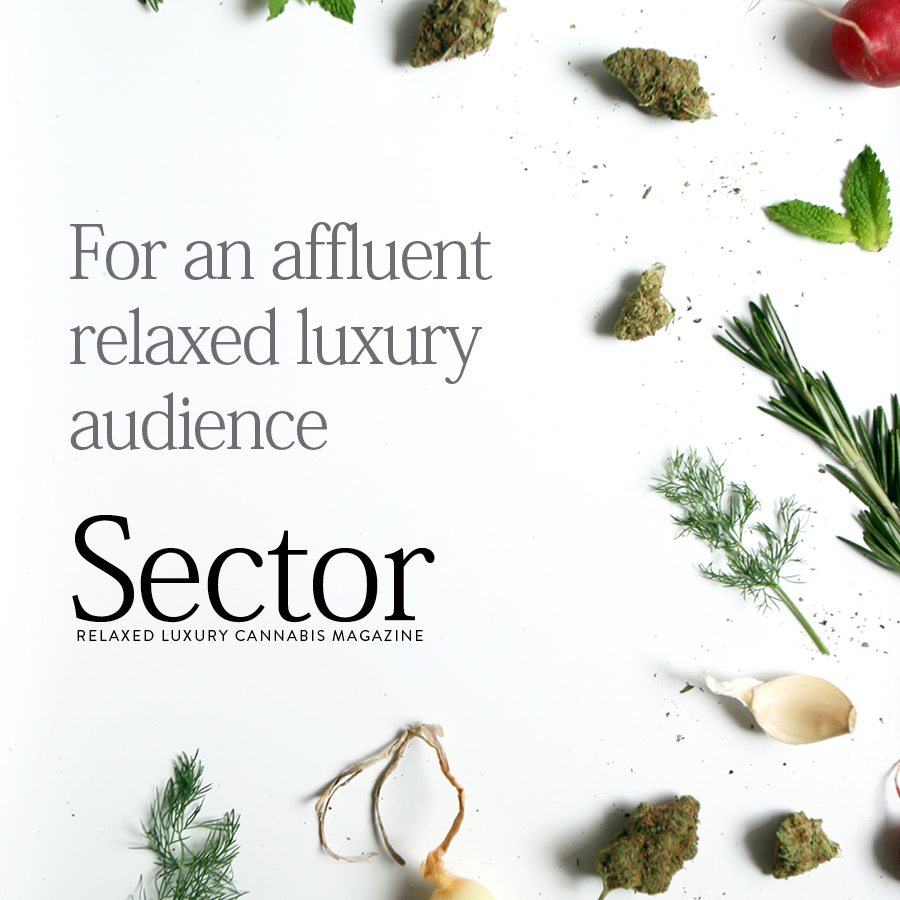Why are indoor plants and flowers so beneficial to us?
(and how to choose and care for them)
By Robin Krafft
An Indoor Species
Human beings began building settlements about 10,000 years ago. Before that, we were completely surrounded by the natural world for hundreds of thousands of years. The machine age, trade routes, globalization, the rise of cities and technological advances have only taken us further away from nature and into much more artificial environments, (where we spend the majority of our time). In modern times, we are deeply enmeshed with technology and the indoor habitats that we create for ourselves are sometimes lacking in natural elements.
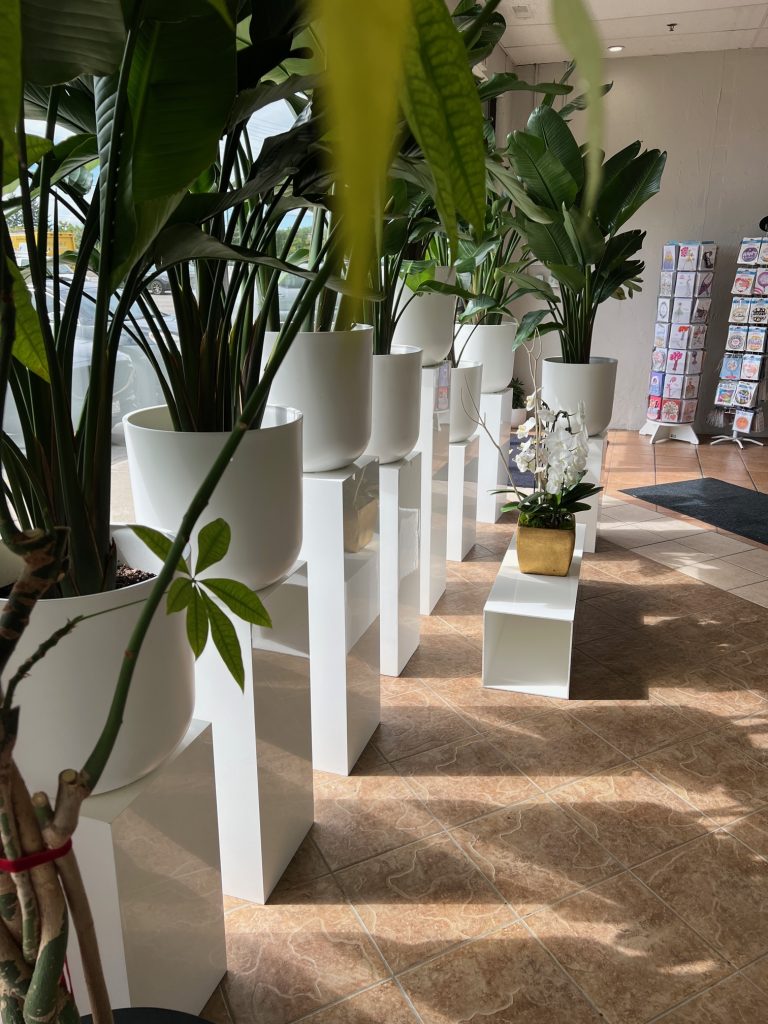
At Home
Recently, we have come through a time in human history when our outdoor activities have been curtailed for other reasons and we have been faced with restrictions that made us scrutinize our own individual indoor spaces. It’s interesting to note that houseplants were trending during the pandemic, perhaps reflecting a desire to bring more living, natural beauty inside. Botanical forms and living plants and soil are comforting to us, somehow.
We Are Nature
Ecopsychology studies this emotional relationship between humans and the natural world. The premise is that while the mind is molded by the modern world, its deeper structures were created in a primal and very natural environment long ago. We need nature. We are nature.
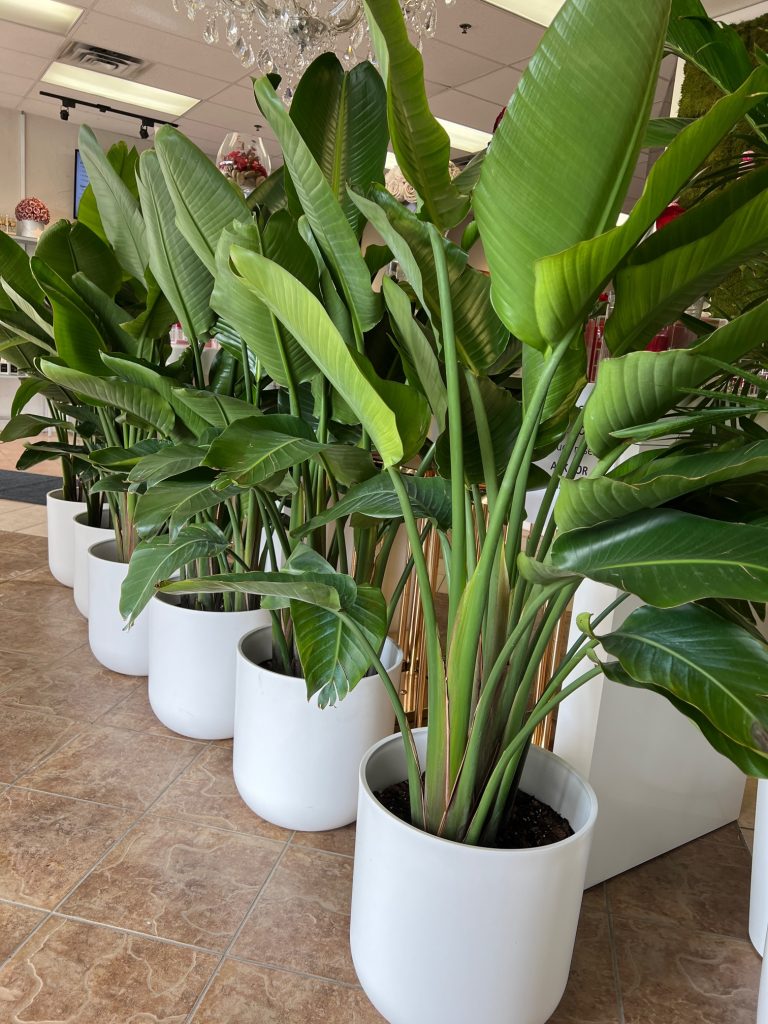
Biophilic Design
While sounding a bit bohemian, these concepts are being embraced by big business, particularly by tech titans and the healthcare sector. Biophilic theory and design, which seeks to restore the instinctive bond between humans and nature, blurs the line between inside and outside. With an understanding that we benefit from surrounding ourselves with natural elements, architects incorporate plant life as an essential feature in their builds, which often mimic nature themselves in structure, line and design. Apple, Rolls Royce, McDonald’s, Adobe, Google and Amazon are all setting the standard in the use of biophilic architecture.
Physical Benefits
There must be considerable return on this kind of investment. If you followed the Amazon link then you already know that there are measurable and consistently verified benefits for our bodies when we have living plants in our environments. House plants filter dust and microbes from the air such as benzene and formaldehyde, which are common in our homes. Plants also increase the oxygen level, which has a beneficial effect overall, while the increased humidity moistens the respiratory system and skin. Our nervous system also reacts when we are in a more natural setting. While this organic response of the body is physiological, the emotional side effects can enhance our mental health.
Psychological Benefits
This brings us to a whole host of psychological benefits. There are many studies and surveys cited online indicating how plants affect us and the list seems a bit miraculous: productivity, attention, creativity, memory, concentration, self-worth, sense of accomplishment and mood are all improved by having house plants… but how? There are two theories that help to explain these very real benefits.
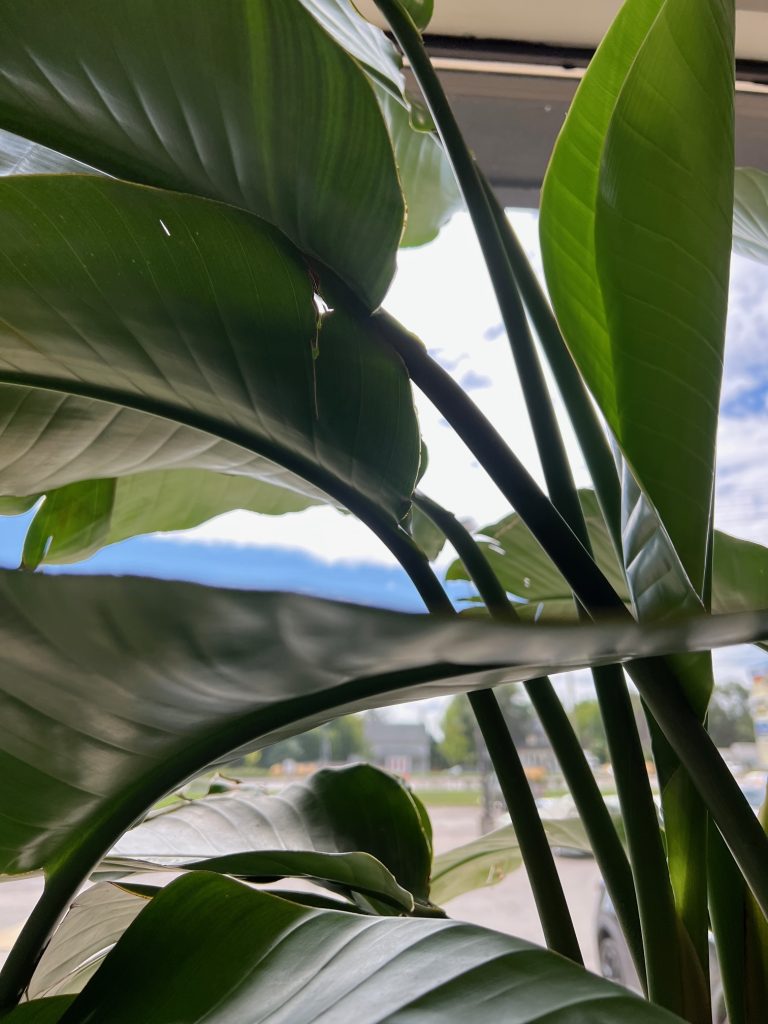
A.R.T.
Attention Restoration Theory, (ART), suggests that when we are concentrating or working, for example, we use voluntary attention. It is controlled by our own will, requires effort and can only be maintained for so long. Contrast that with what is called involuntary attention. This is a much more effortless situation in which the mind is allowed to wander, rest, and take in information or stimulus in a more automatic way. This is the kind of attention that occurs when we are exposed to natural surroundings and incidentally, also has a regenerative effect on voluntary attention. (Kaplan and Kaplan) In effect, that daydreaming you used to do in class, gazing out the window, was actually a way for you to self-regulate and return your attention into the room so you could focus on your teacher’s voice. It makes sense that a supportive environment that includes abundant plant life provides an opportunity for employees to refresh themselves, preventing mental fatigue and keeping the creative juices flowing.
S.R.T.
Stress Recovery Theory (SRT) suggests that nature activates our parasympathetic nervous system, thereby reducing our stress and taking us from an arousal state to a calm and relaxed state. (Ulrich) People tend to be more productive, more congenial and more capable when they are happy and relaxed, making biophilic design principles seem essential in high-stress work environments. More specific studies have recently shown that hospitalized patients are also positively impacted by natural elements, with shorter recovery times, improved wellbeing, lower pain levels and less anxiety. (Taking flowers to someone in the hospital really does help!)
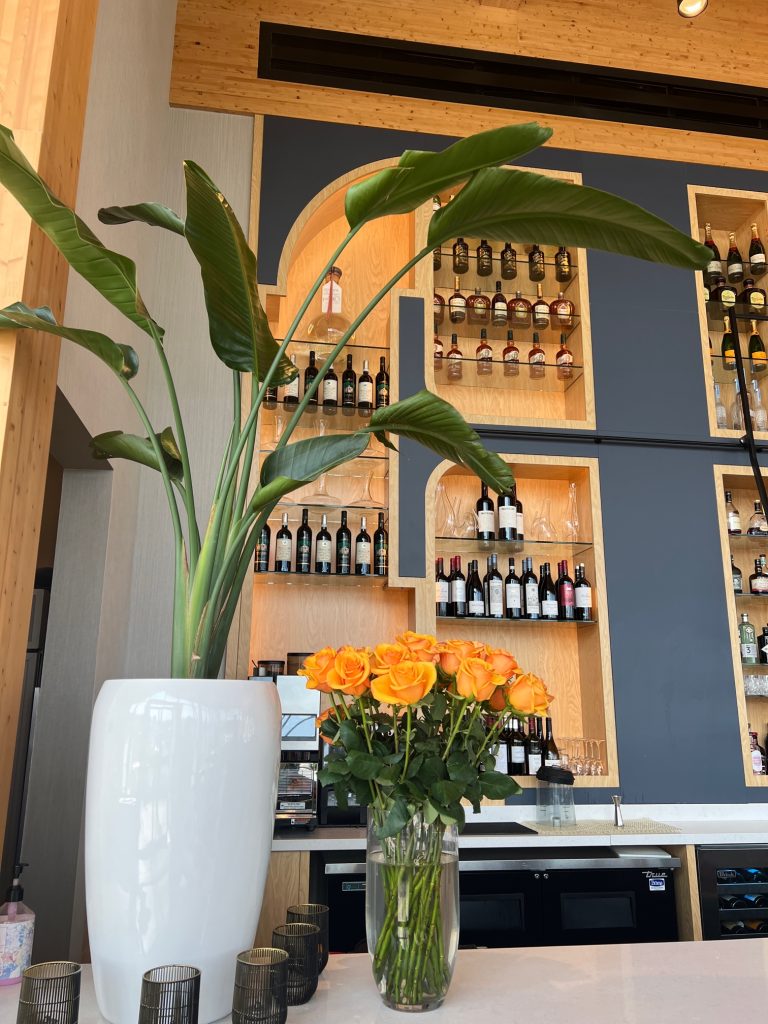
Celebrate With Natural Style
At the other end of the spectrum, plants and flowers can be used to design an emotional atmosphere of beauty and celebration, creating a unique natural ambiance. The Rosarium recently provided large tropicals for the corporate annual New You all-white party. Six foot tall palms and living bird-of-paradise plants brought Tulum into the room and set the backdrop for an amazing upscale social event.
Rosarium Tropicals
On a smaller scale, you can visit in person to discover the wonderful variety of tropical plants that The Rosarium carries to enhance your own home. In collaboration with Veradek, a local manufacturer, all of the upscale pottery is Canadian made while the lush tropicals are grown in Niagara by the Ontario Flower Growers Cooperative. This collective of over 100 growers have assembled a wholesale operation that enables smaller florists to buy all Ontario-grown plants right here in Mississauga.
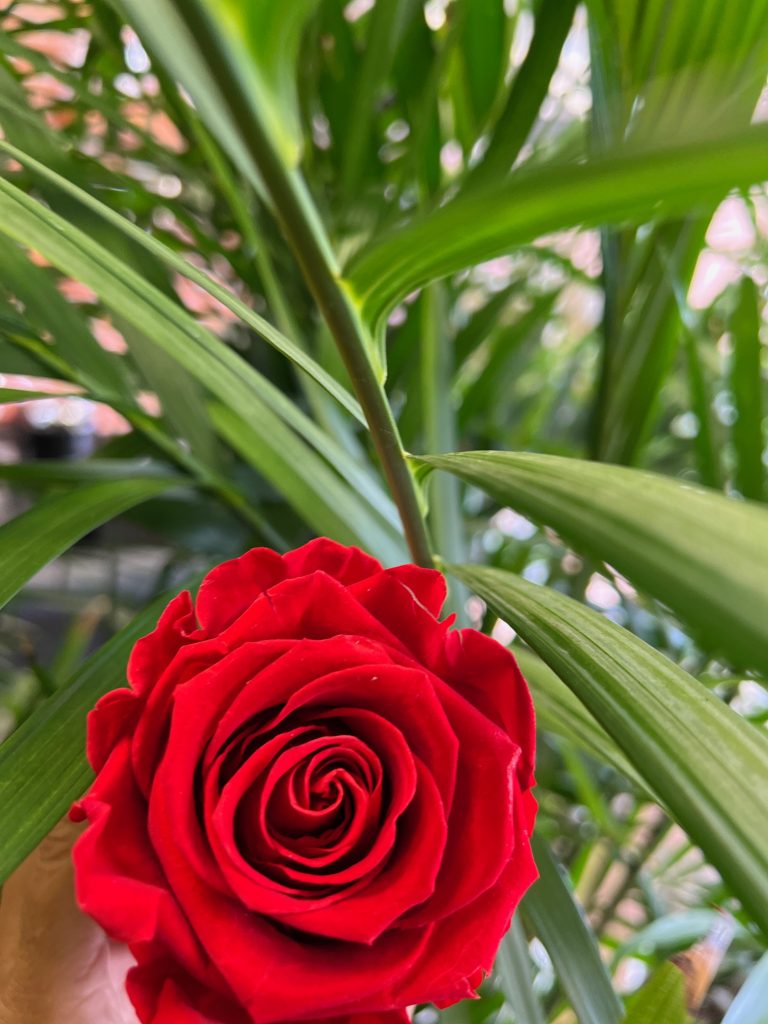
Choosing Plants
Before choosing a houseplant, however, you need to take a few things into consideration: location, location, location! We all know that plants need sunlight, but each plant is ideally suited to specific types of light and position. All this means is that you need to take into account that a low light plant will be okay in your east window or the corner of a bright living room but a plant that loves lots of sunlight will need a bit more of a southern exposure, or to be placed closer to the window. Most of the information that you need to know to grow a tropical plant successfully is on the plastic tag, (usually stuck into the soil). Make sure the plant has this important information and keep it for your reference. Be aware that some houseplants can be toxic to children and pets, so you can use the identification tag to make a safe, informed choice.
Watering Your Plants
Most plants will do well with a weekly dusting and watering. Always make sure that the pot has drainage holes and that you have a shallow dish underneath for water to drain out. Overwatering and underwatering are the most common problems, so just water in portions until you see some drainage and then stop. Over time, you will get a sense of how much water each one of your plants actually needs. If they look droopy midweek, poke your finger into the soil and if it feels far too dry, then give it some water. Always water the soil and not into the centre of the plant.
Refresh Yourself
Keep in mind that plants are a bit like people in that they don’t enjoy extreme conditions like direct/harsh sunlight, strong winds or cold winter drafts, (but a little fresh air is delightful). In time, caring for your plants will seem as natural as caring for yourself. You may decide you want more than one! You might even consider designing an indoor garden or windowscape for yourself. Plants and flowers can be utilized to create an inspiring workspace or a quiet refuge in your home. Caring for your plants, gently tending and watering, (talking and singing to them is allowed), is a pleasant, nurturing activity that promotes positive feelings. You can also just sit back, relax and simply appreciate how living things invite our eyes, soothe our bodies and refresh our minds.
Sources:
NASA, Plants Clean Air and Water for Indoor Environments
Prevention, 8 Healthy Benefits of Indoor Plants According to Horticulture Experts
Healthline, A Hobby for All Seasons: 7 Science-Backed Benefits of Indoor Plants
Positive Psychology, What is Kaplan’s Attention Restoration Theory (ART)?
Visionary Insights, Stress Reduction Theory: Why Looking at Nature is Beneficial to our Mental and Physical Health

